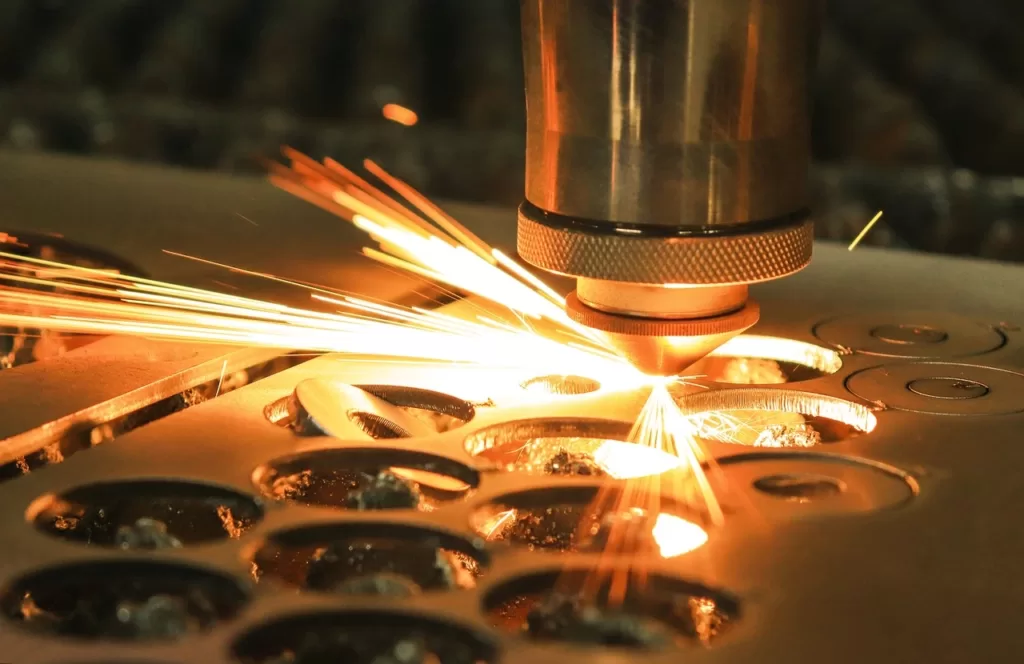Introduction
In a world driven by technological marvels, laser technology stands out as a shining beacon of innovation. From the precision of medical procedures to the spectacle of entertainment, lasers have woven their way into countless aspects of our lives, often hidden from plain sight. Welcome to “Laser Insights: Uncovering Hidden Wonders,” where we embark on a journey to explore the captivating world of laser technology.
Table of Contents
The Power of Laser Technology
1.1 What is Laser Technology?
Laser technology, short for Light Amplification by Stimulated Emission of Radiation, is a groundbreaking field that harnesses the power of focused light beams. These beams are coherent, meaning the waves align perfectly, resulting in a concentrated and intense energy source. Such precision has found applications across various industries, revolutionizing how we perceive and interact with the world.
1.2 Evolution of Laser Technology
The story of laser technology begins with a flash of inspiration, dating back to the early 20th century. Over the years, it has evolved into a diverse and influential force, with key milestones such as the invention of the first laser in 1960. Breakthroughs continue to unfold, shaping our understanding and application of lasers.
Applications in Medicine
2.1 Precision Surgery with Lasers
Imagine surgery without the traditional scalpel. Laser technology has made this a reality, ushering in a new era of precision surgery. By using lasers, surgeons can make incredibly precise incisions, resulting in reduced scarring, minimal bleeding, and faster recovery times. It’s a game-changer in the medical field.
2.2 Laser Diagnostics and Imaging
When it comes to early disease detection, lasers play a pivotal role. Medical imaging techniques like MRI and CT scans benefit from laser technology’s ability to provide sharp and detailed images. This advancement empowers healthcare professionals to identify diseases at earlier stages, increasing the chances of successful treatment.

Image by Tomislav Jakupec from Pixabay
Laser Technology in Manufacturing
3.1 Laser Cutting and Welding
In the world of manufacturing, precision is paramount. Laser cutting and welding have become indispensable tools in creating intricate designs and assembling complex structures. These techniques offer unparalleled accuracy, minimizing material wastage and maximizing efficiency.
3.2 3D Printing with Lasers
Additive manufacturing, often referred to as 3D printing, has taken the world by storm. Laser technology plays a vital role in this process, allowing for the creation of intricate and customized objects. From aerospace components to medical implants, 3D printing with lasers opens up a world of possibilities.
Lasers in Entertainment and Art
4.1 Laser Light Shows
Have you ever been mesmerized by a laser light show? These captivating displays are a testament to the creative possibilities of laser technology. From concerts to theme parks, laser light shows create stunning visuals that leave audiences spellbound.
4.2 Laser Artistry
Artists have embraced lasers as a unique medium for their creative expressions. Laser art installations can be found in galleries and public spaces worldwide, pushing the boundaries of what is possible with light and imagination.

Environmental Applications
5.1 Laser-based Environmental Monitoring
Environmental scientists rely on laser-based technology to monitor changes in our ecosystem. From tracking deforestation to studying glaciers, lasers provide precise data that is essential for climate research and conservation efforts.
5.2 Laser-Induced Breakdown Spectroscopy (LIBS)
LIBS, short for Laser-Induced Breakdown Spectroscopy, is a powerful analytical tool. It uses lasers to vaporize a small portion of a sample, allowing scientists to analyze its composition. LIBS finds applications in environmental analysis, helping us understand the elements that make up our surroundings.
The Future of Laser Technology
6.1 Emerging Trends
The future of laser technology is a thrilling frontier. Advancements in fields such as quantum optics and nanotechnology promise to take lasers to new heights. From ultra-fast communication to unimaginable computing power, the possibilities are limitless.
6.2 Ethical Considerations
With great power comes great responsibility. As laser technology continues to evolve, we must address ethical concerns. Responsible usage and safety measures are paramount to ensure that lasers remain a force for good.
Conclusion
“Laser Insights: Uncovering Hidden Wonders” has illuminated the extraordinary world of laser technology. From its humble beginnings to its pervasive presence in our lives, lasers continue to astonish us. As we look to the future, it is clear that the journey of discovery is far from over. The hidden wonders of lasers will undoubtedly continue to shape our world.
FAQs
1. How do lasers work in surgery?
Lasers in surgery deliver focused and precise energy to cut or vaporize tissue. This precision minimizes damage to surrounding areas and reduces scarring, making it a preferred choice for many procedures.
2. Are laser light shows safe for the eyes?
Yes, laser light shows are safe when properly designed and executed. They use low-power lasers and follow safety guidelines to ensure audience protection.
3. What are the environmental benefits of laser-based monitoring?
Laser-based environmental monitoring provides accurate data on environmental changes, aiding in conservation efforts, climate research, and the protection of natural ecosystems.
4. Can lasers be used for 3D printing at home?
Yes, there are desktop 3D printers that use lasers to create intricate 3D-printed objects. These printers are becoming more accessible to consumers.
5. What are the potential risks of laser technology?
The main risks include eye damage from direct exposure to laser beams and ethical concerns related to weaponization or misuse of laser technology. Proper safety measures and responsible usage are essential to mitigate these risks.

